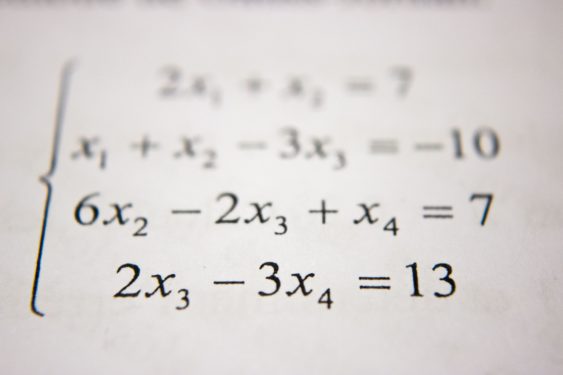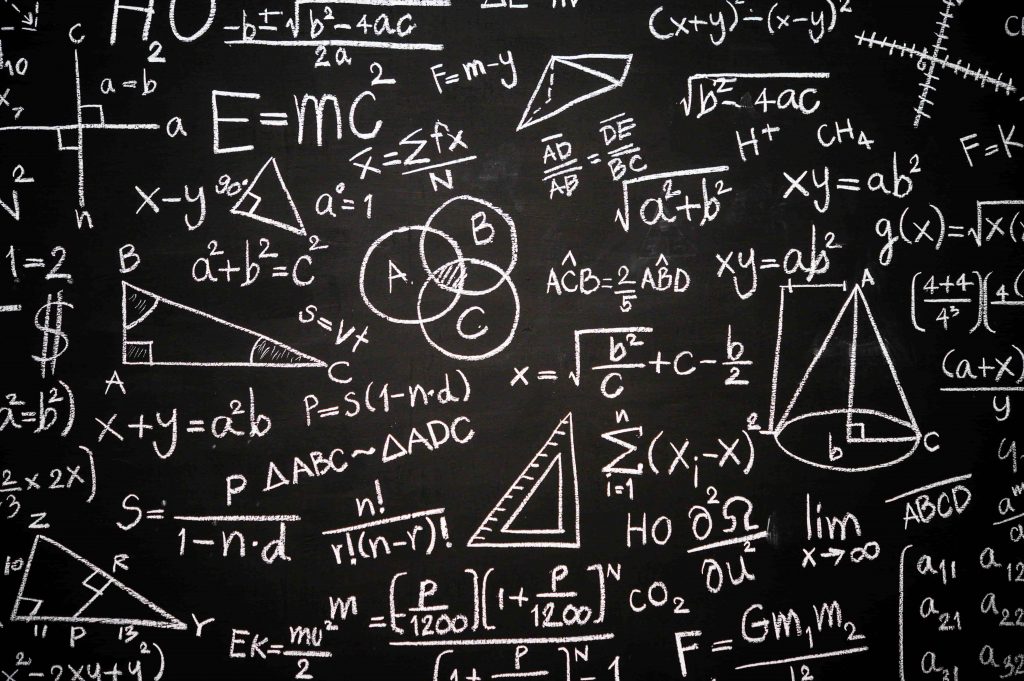9th Grade Math
9th grade is an important year for teenagers since they are preparing to enter high school and have to deal with State exams in different subjects. 9th grade math is often a challenging subject so we are going to break down the different topics included in this years’ subject and walk you through it to help you make sure you have it all covered.
Math in grade 9 includes different topics, among which we find Algebra, Geometry, and Fractions. Students at the age of 14 or 15 years old, have to consolidate previous knowledge acquired in Middle School, learn new concepts, and prepare for the harder rhythm of studying in high school.
When talking about what students have to achieve in 9th grade math, we have to understand that the goals are specific and measurable. There are different aspects that will define a students’ grade in 9th grade math and they are conceptual understanding, strategic competence, productive disposition, adaptive reasoning, and procedural fluency. All of these components can be measured in exams and will be what teachers will focus on throughout the year for the designs of their didactic strategies and assessments.

Basic expectations for 9th graders in math are:
- Show math fluency in an over-average level
- Analyze and resolve problems using the Pythagorean theorem
- Be able to use reasoning and common sense to solve multi-step problems
- Work and solve different algebraic equations
In their work, students are supposed to show the reasoning process that took them to their answers, using visualizations if needed. This logical argument shows teachers what mathematical concepts and principles students can use and how fluent they may be.
9th grade math students are also expected to make connections between their hard math work with the real world, applying what they have learned into problems that are more meaningful and relevant, transforming math from a mere school subject to a relevant useful skill students need for their future.
Best 9th grade math tutors
SEARCH FOR OTHER TUTORS?
Subject
Zip Code
Best 9th grade Tutors Near You:
A typical curriculum for 9th grade math
Are you ready to get started with math for 9th grade? Let’s start by looking at a typical curriculum for this year at school, and analyzing each part a bit more in detail to understand what students are expected to do. We will also offer resources and useful advice to work on each section and help you or your teenage child to succeed this year!
Topics covered in 9th grade math:
- Whole numbers
- Integers
- Fractions
- Exponents
- Patterns
- Functions and relationships
- Algebraic expressions
- Equations
- 2D Geometry
- Pythagoras theorem
Whole numbers
This section includes a review of the properties of whole numbers, as well as different types of calculations.
Working with multiples and factors in another aspect covered in this part. This basically means identifying common multipliers and common factors.
Problems including ratio, rate, and proportion, usually allow for using a calculator. Here the emphasis is on resolving a problem and how students proceed to get the necessary results. In this part, students are presented with a problem that is relevant and meaningful, maybe using situations the students face daily.
Students are encouraged to use different mathematical formulas to discover the speed at which a car was going, the number of ingredients in a recipe, or other problems applied to the financial context.
In these last sections, there are problems including prices, interest rates, and other interesting topics not far from the reality around students. Financial situations will include students learning how to calculate simple and compound interest, exchanging rates, commissions, and other relevant bank terms.
For exercises related to whole numbers you can try this worksheet.
Integers
Integers are numbers that can be written without a fractional component. Another way of saying it, it’s that they are whole numbers. Integers include also the negative counterparts of numbers, like 1, 2, 3 but also -1, -2, -3.
This section of 9th grade math includes operations with whole numbers either of positive or negative value.
If you want to practice adding, subtracting, multiplying, and dividing integers, you can check out the exercises on this website. (https://za.ixl.com/math/grade-9/add-subtract-multiply-and-divide-integers)
Fractions
In 9th grade, students will work with fractions, which are composed of a numerator and a denominator.
They are expected to understand what fractions are and how to change them into decimals. Doing so is rather easy since all you have to do is take the numerator (the number on top) and divide it by the denominator (the number in the bottom). Students are usually allowed to use calculators for this.
Another way of expressing fractions is with a number in the front. This would represent the whole number that is going to go in front of the decimal point. Then, the process is the same as before.
At this level, students are also encouraged to work with negative fractions, understanding what fractions represent bigger numbers.
Another task students will have to deal with is changing decimals into fractions. To do this they have to follow certain steps, and maybe a calculator to find the lowest terms.
To understand the basics of fractions and how to change them into decimals, as well as transforming decimals into fractions, you can check out this explanation.
Finally, students will learn how to perform additions, subtractions, multiplications, and division with fractions.
Exponents
An exponent refers to the number of times a number is multiplied by itself. Three to the third (which is normally written 33) means three multiplied per three, multiplied per three. The results is 27, which is very different from 3 multiplied 3, which is only 9.
Exponents can also be negative, meaning that instead of multiplying, we are going to divide. So, for example, if we have 5-3, we are going to start with the number one and divide it three times by 5. The result is 0,008.
9th grade math includes exponents in whole numbers and simple exponential equations. It’s imperative for students to master these concepts since in the future they will have to apply it to fractions and more complex equations.
You can check out some exercises on this website.
Patterns
In this section, students are taught how to recognize patterns with numbers. They will be able to find, analyze, and generalize geometric and numeric patterns.
Patterns have a deep meaning in Math as a subject. In fact, many say that maths is all about patterns. However, little time is dedicated to learning how to identify these patterns and use them. Having a better understanding of how to work with patterns will help students in their future academic path, as it will work better than memorizing functions when math becomes more complex.
Interesting collection of 9th grade math exercises related to patterns that will help students start making connections and understand them.
Functions and relationships
Functions are relationships that make sense, but not all relationships make sense. This means that every function is a relationship, but not all relations are functions.
A relation is composed of a set of numbers, commonly called the domain. They define the relation. Then there is another group of numbers that are known as the output of the relation or range. Relation order pairs of numbers, one from the domain associates with one or more numbers of the range group. It’s usually written like this: {(1,2),….
The connection between numbers from the domain and the range is also called a function.
As we mentioned, some relations do not make sense, and therefore are not considered functions. This happens with one number of the domain is associated with 2 or more numbers in the range.
Check out a simpler explanation with examples.
Algebraic expressions
In 9th grade math students are introduced to algebraic expressions in Algebra I, though in some schools students may already be dealing with Algebra II.
This course introduces the basics of variables, and how to evaluate and substitute expressions, as well as writing algebraic expressions.
Algebra I includes quadratic equations, inequities, and polynomials. It also includes factoring, radicals, and exponent rules. However, the primary goal of Algebra I is to teach students to solve equations, changing parameters on both sides of the mathematical formula.
If students have moved to Algebra II, they will be working with functions, matrix, series and sequences, radical expressions, complex numbers, and logarithmic.

Equations
When learning about this topic, students are expected to resolve equations by finding a variable that makes the equation true. In order to achieve this, they have to manipulate the equation to find the value of the variable.
There are one-step equations and also multi-step equations. Students will start with the simplest ones and move on to more difficult ones once they grasp the concept of how to work with them. More advanced equations may include more than one variable and the need to use the distribute properties in order to find the required values.
A lot of emphases is put on resolving equations in the 9th grade math curriculum since it’s a skill students will need in their future academic path.
For some exercises and further practice, you can go to this website.
2D Geometry
In geometry, students are expected to analyze problems and find solutions. Usually, the topics include the area or perimeter of triangles, rectangles, squares, and other shapes. Students may also be expected to work on problems that require them to understand and calculate angles.
This course teaches students how to face the problem from the first moment. They need to think before they can start calculating anything. Analyzing the problems from a logical point of view, helps them use their time more efficiently, taking the information they need and using it to find solutions.
The exercises students find in geometry in 9th grade math are examples of what they will have to deal with when moving on to high school. Here they will learn the basics from which to build over in the future. That is why is so important for them to understand and be able to use the geometry principles and concepts with ease and confidence.
For some exercises that cover the main topics of geometry in 9th grade math, you should visit this site.

Pythagoras Theorem
In 9th grade, math students are introduced to the Pythagorean Theorem. This is really a cornerstone of math in so many ways, it’s the base for all trigonometry and geometry. That’s why students need to make an extra effort to get it right now!
The Theorem says that if you have a right triangle (meaning that one angle is 90 degrees), and you know two of the sides, you can always calculate the third one. It’s important to identify the hypotenuse, which is the side opposite to the 90-degree angle and will always be the longest side.
So, basically, Pythagoras discovered that adding the square of one of the shortest sides and the square of the other shorter side equals to the square of the hypotenuse. Since students have already learned about equations and substitutions, they will be able to apply the Theorem to find any side of a triangle.
The Pythagorean Theorem can also be useful to figure out the area of an isosceles triangle. Students have to apply their common sense, be a little bit imaginative, and apply what they have learned by working with the Theorem.
This simple formula has a lot of implications in Math and it’s very useful to solve different geometry and trigonometry problems.
If you want to start applying the Pythagorean Theorem and using what you have learned check out this website.
We hope you have found the necessary answers if you’re dealing with 9th grade math content, or you’re planning to help your child with their courses. If your child is struggling with the topics covered in this year’s course, you may want to consider getting them a private math tutor to help them build the bases to succeed academically in the future. After all, 9th grade is the year they will learn the necessary to enter high school, and they need to be well-prepared.

Enjoy All The Benefits
You don’t pay your first hour unless you find it a good fit.
Only pay for the time you need.
No subscriptions or upfront payments.
Find Tutors Near You